Xiaomi Launches Mi Note 10 Lite, Redmi Note 9 & Note 9 Pro Globally
by Andrei Frumusanu on April 30, 2020 11:00 AM EST- Posted in
- Mobile
- Smartphones
- Xiaomi
- Redmi Note 9
- Redmi Note 9 Pro

Today Xiaomi is launching a trio of mid- to low-end devices, and we’re seeing the global launch of the new Mi Note 10 Lite, Redmi Note 9 Pro and the Redmi Note 9.
The new Note 10 Lite is a cut-down version of last year’s Note 10 which was the first phone with an 108MP camera. The Lite variant keeps the design aesthetics but comes with a smaller 64MP still very capable camera.
The new Redmi Note 9 series phones adopt a new design language, offering new SoCs in the forms of the Snapdragon 720 and the Helio G85, all whilst maintaining their characteristic huge battery capacities as well as extremely low prices.
| Xiaomi May 2020 Phones | |||
| Note 9 | Note 9 Pro | Note 10 Lite | |
| SoC | Helip G85 2x A75 @ 2.0GHz 6x A55 @ 1.8GHz Mali G52MP2 @ 950MHz |
Snapdragon 720 2x A76 @ 2.3GHz 6x A55 @ 1.8GHz Adreno 618 |
Snapdragon 730 2x A76 @ 2.3GHz 6x A55 @ 1.8GHz Adreno 618 |
| Display | 6.53-inch FHD+ 2340 x 1080 (19.5:9) |
6.67-inch FHD+ 2400 x 1080 (20:9) |
6.47-inch FHD+ 2340 x 1080 (19.5:9) |
| IPS LCD | AMOLED | ||
| Dimensions | 162.3 x 77.2 x 8.9 mm 198 grams |
165.8 x 76.7 x 8.8 mm 209 grams |
157.8 x 74.2 x 9.67 mm 204 grams |
| RAM | 3/4GB LPDDR4X | 6GB LPDDR4X | 6GB LPDDR4X |
| NAND Storage |
32/64/128GB + microSD |
64/128GB UFS 2.1 + microSD |
64/128GB UFS 2.1 + microSD |
| Battery | 4920mAh (18.94Wh) typ. | 5020mAh (19.32Wh) typ. | 5260mAh (20.25Wh) typ. |
| 18W Fast Charging | 30W Fast Charging | ||
| Front Camera | 13MP | 16MP 1.0µm f/2.5 |
16MP 1.0µm f/2.48 |
| Primary Rear Camera | 48MP 0.8µm 1/2.0" (12MP 1.6µm 2x2 binning) f/1.79 |
64MP 0.8µm 1/1.72" Samsung GW1 (16MP 1.6µm 2x2 binning) f/1.89 |
64MP 0.8µm 1/1.72" Sony IMX686 (16MP 1.6µm 2x2 binning) f/1.89 |
| Secondary Rear Camera |
8MP Ultra-Wide-Angle f/2.2 118° FoV / 13mm eq. |
8MP 1.12µm Ultra-Wide-Angle f/2.2 119° FoV / 13mm eq. |
8MP 1.12µm 1/1.4" Ultra-Wide-Angle f/2.2 120° FoV / 13mm eq. |
| Tertiary Rear Camera |
2MP Macro Camera |
5MP 1.12µm Macro Camera f/2.4 |
2MP Macro Camera |
| Extra Camera |
2MP Depth Sensor | 5MP Depth Sensor | |
| 4G / 5G Modem |
Integrated 4G | ||
| SIM Size | NanoSIM + NanoSIM | ||
| Wireless | 802.11a/b/g/n/ac BT 5.0 LE, NFC, GPS/Glonass/Galileo/BDS |
||
| Connectivity | USB Type-C + 3.5mm jack | ||
| Special Features | |||
| Fingerprint sensor (rear) | Fingerprint sensor (side) | In-Display Fingerprint sensor | |
| Launch OS | Android 10 w/ MIUI 11 | ||
| Launch Prices | 3+64GB: $199 4+128GB: $249 |
6+64GB: $269 6+128GB: $299 |
6+64GB: 349€ 6+128GB: 399€ |
Starting off from the highest end device today, the new Mi Note 10 Lite continues to adopt a Snapdragon 730 SoC that we’ve seen in the Mi Note 10 phones. Overall, the Note 10 Lite doesn’t see all that different internal hardware (besides the cameras), other than now coming with a lower 64GB storage base option. It’s still a very capable mid-range phone thanks to the SoC’s A76 cores at 2.3GHz.
The Redmi Note 9 Pro adopts a similar SoC in the form of the Snapdragon 720. On paper the SoC is exceedingly similar to the Snapdragon 730 as they share the same CPU configuration and clocks. This is a more significant generational update compared to the Helio G90T processor found on the Note 8 Pro last year.
Finally, the Redmi Note 9 switches up SoCs from a Snapdragon 665 To a Helio G85 – this should again be a nice performance boost for the phone as we’re switching over to Cortex-A75 cores from the predecessor design’s A73 cores.
The Mi Note 10 Lite and Redmi Note 9 Pro come with 6GB of RAM in most global markets, with the Redmi Note 9 having a choice of 3 or 4GB depending on your choice of 64GB or 128GB storage variants, which by the way is also the storage choice for the higher end models today.
The Mi Note 10 Lite adopts a similar higher-end design as the Mi Note 10 phones, which is quite rare in this price range as it looks more like a flagship phone. The phone is characterised by a curved edge display coming in at 6.47” diagonal and sports an AMOLED screen with a 2340 x 1080 resolution.
The phone has a reasonable footprint with a 74.2mm width, however it’s quite thick at 9.67mm and a hefty 204 grams weight – all compromises in order to fit in a massive 5260mAh battery into the phone.
Xiaomi downgrades the 108MP HMX sensor in favour of a smaller 64MP Sony IMX686 – still a quite high-end sensor and the follow-up to the immensely popular IMX586 that we’ve seen in numerous devices in 2019. With 2x2 pixel binning this results in 16MP pictures with an effective pixel pitch of 1.6µm. Along with an f/1.89 aperture and computational photography night modes this should result in excellent picture quality.
We find an 8MP ultra-wide-angle lens, with two extra cameras in the form of a 2MP macro camera and a 5MP depth sensor.
All of the phones announced today have 3.5mm headphone jacks as well as IR blasters – as well as NFC depending on regional models.
The Redmi Note 9 Pro switches up the design compared to its predecessor, now opting for a more symmetrical feature layout. Gone is the notch in favour of a central display cut-out, housing a 16MP front camera.
The phone’s display is an IPS LCD at a 6.67” diagonal and 2400 x 1080 resolution. The phone is quite big at 76.7mm width, and is again quite heavy at 209 grams but again features a massive 5020mAh battery.
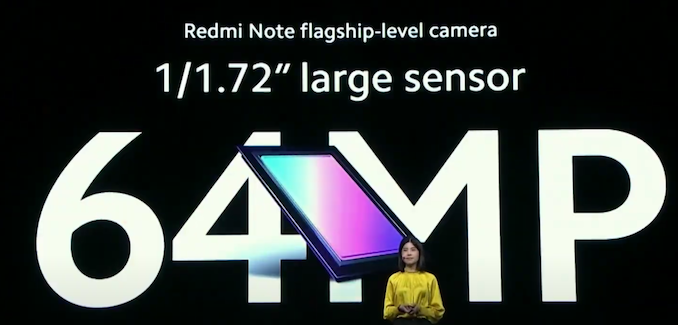
The camera setup of the phone is the similar for all phones today, but slightly varying in the modules used. The Note 9 Pro uses the same sensor as the predecessor Note 8 Pro, meaning a 64MP Samsung GW1 sensor. The optical characteristics here are the same as on the Mi Note 10 Lite, just with a different sensor. Oddly enough, this variant of the phone has a 5MP macro camera which on paper is more capable than the Mi Note 10 Lite.
The phone has a side-mounted fingerprint sensor for authentication.
Finally, the Redmi Note 9 is today’s lowest end model. It again has a similar IPS LCD display, but features the camera cut-out in the left corner instead of the centre.
Aside from the aforementioned SoC differences, this model also has an ever-so-slightly smaller battery at 4920mAh (it’s still huge), and features a 13MP front camera.
The main camera on the rear is a 48MP unit with 0.8µm pixels – Xiaomi here doesn’t specify the sensor used to I expect maybe a lower end Samsung GM2. The rest of the camera setup is in line with the other phones, just that this time again the macro module is 2MP.
Aggressive Pricing - Available mid-May
The Mi Note 10 Lite, Redmi Note 9 Pro and Redmi Note 9 will be available mid-May in various global markets. The Mi Note 10 Lite comes in at 349€ for the 6+64GB model, and 399€ for the 6+128GB unit. These are extremely competitive prices given we’re dealing with an OLED display phone and a great camera setup.
The Note 9 Pro starts at $269 for the 6+64 up to $299 for the 6+128 variant. The Note 9 lands in at $199 for the 3+64 and $249 for the 4+128 configuration. Xiaomi here today quoted prices in different currencies so likely market availabilities will start differently across the models.
We recommended the Note 8 Pro as amongst the best value device at its price point over the last 2 quarters and it seems like the Note 9 Pro is going to be a strong follow-up. Meanwhile the Note 10 Lite also is going to be a device to beat at its given price-point, outperforming similar devices such as the Galaxy A71.


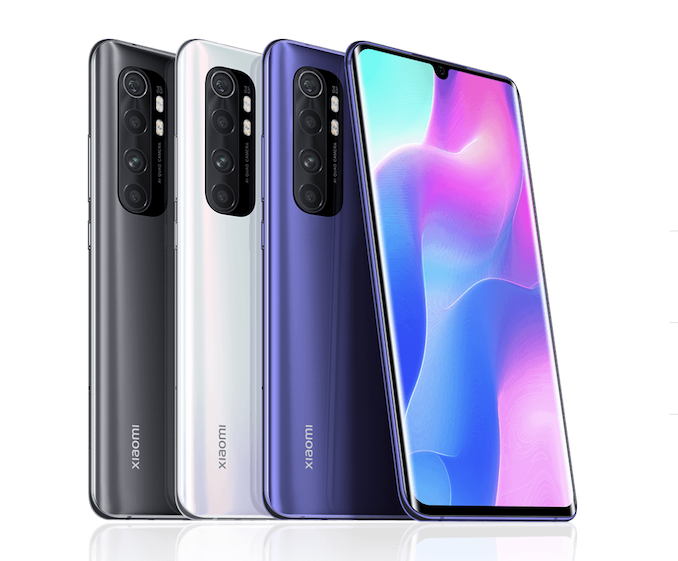
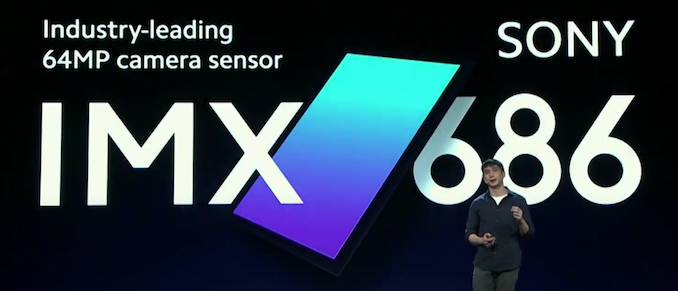
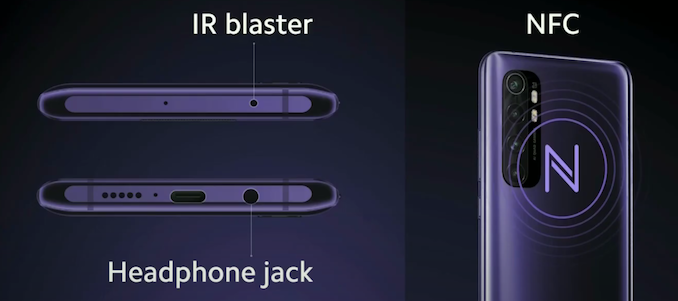

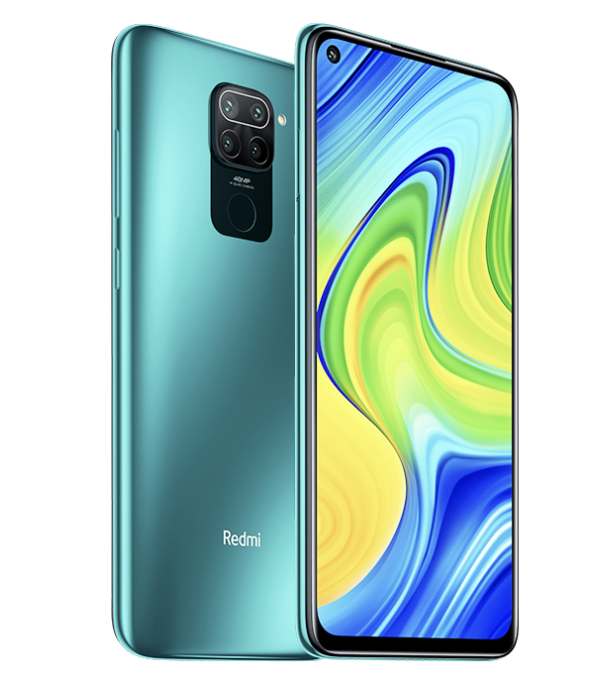








26 Comments
View All Comments
abufrejoval - Friday, May 1, 2020 - link
I just got (and returned) a Mi Pro 8 8/128 these days, selling at just above €300.It sports the older 845 that should still be quite a bit ahead of the 730, even if the performance of both is simply "enough" for what I, or in this case one of my sons would do with a phone.
The reason I finally decided to return it, is that Xiaomi is no longer enjoying custom ROM developer support and without the control and longevity these custom ROMs provide, it's simply not the same value proposition, especially later in the life cycle of the product.
In case of the Mi 8 Pro, I couldn't even get it rooted, because none of the TWRP variants that are floating around still seemed to work with the Android Q, which landed on the Mi 8 Pro, right in the middle of the setup (I think it went from O via P to Q right after unpacking). Those two updates were rather reassuring in a way, but somehow I felt that March 2020 Q would also be the last update ever from Xiaomi for the device. And then there is simply too many pre-installed apps that shout "convenience" while perhaps doing "privacy intrusion" and without root you can't even trace and tell.
It's a shame, because otherwise it is an excellent phone, very snappy hardware, feature complete, wonderful screen and good options to make that fat notch disappear optically (OLED be thanked!), most of which was needed to support face-unlock, which is completely gone with Android Q, probably for security reasons (too easy to overcome).
Equivalent OnePlus devices sell for €150 more, very probably only because they come with full LinageOS backing and thus will remain useful for a couple more years (so I got myself a OnePlus 7 Pro and passed my perfectly fine Oneplus 5 on as a Mi 8 Pro replacement instead).
This whole shuffle was only necessary, because one of the many LeEco Le Max 2 devices in the family finally succumbed to old age, back screen, battery and a partially defect USB-C port. The others have just gone to Android Q or LineageOS 17.1, having launched on Marshmallow in 2016.
Those weren't even expensive when they launched and apart from an undersized battery have well withstood the test of times and power-user kids.
Fulljack - Saturday, May 2, 2020 - link
I believe that's because Mi 8 Pro isn't really common smartphone among developers, not because it's Xiaomi phone in general. I've Mi 9T Pro and it has healthy amount of custom rom.realbabilu - Friday, May 1, 2020 - link
Its been a while where 300 US device get flagship like xiaomi poco f1.with its 845. Now mid price down ro 720 or 730. Price 855 865 may be to far from mid price now.Btw, poco has lineage os too like oneplus one.
eastcoast_pete - Friday, May 1, 2020 - link
I would love a test of a 730 device to get an idea how it would compare to an 845. I don't expect a 730 or other 7 series to match an 855 (or 865), but for a daily driver with limited or no gaming, they might do just fine. Also, possibly easier on battery use.uefi - Friday, May 1, 2020 - link
Uh-ohhttps://www.forbes.com/sites/thomasbrewster/2020/0...
PeachNCream - Friday, May 1, 2020 - link
Not much different than the ramming up your backside that Google has been doing for ages now with Android, biometrics, health data, search, mail, text, call logs, location, app usage, browsing, voice conversations, home video cameras, thermostat settings and anything else those grubby little creeps can get their hands on. How is it any different that you're selling out yourself to Xiaomi as well as Google and Facebook? It's just one more messed up, twisted company that wants to know all about you in exchange for cheap hardware or free candy services. There is pretty much no escaping how disgusting Android and Chrome-based platforms are these days with Microsoft, Amazon, and Apple huffing and puffing to catch up.StormyParis - Friday, May 1, 2020 - link
That's the browser and some other Xiaomi apps. Use Firefox + privacy addons and legit apps for music and such.RaduR - Saturday, May 2, 2020 - link
The only problem with these phones is that they are becoming more and more expensive.I used Xiaomi fir the last years starting with the very popular Note 3 pro down to Mi6 , Mi8.
The problem is that Mi10 is super expensive and Mi9 lacks flagship features (OIS ???) .
Now , in the past 300+ USD could give you a lot of phone. Problem si that today same 300USD gives u same performance 3 years ago.
These cameras, CPU, GPU are below Mi6 from 3 years ago. They are just ramping up the price.
Probably there will be a newcomer, these guys will find themselves in Samsung position. It was Huawey => became superexpensive , now Xiaomi . Who is next ?
iphonebestgamephone - Sunday, May 3, 2020 - link
Only the gpu is inferior in 720/730 compared to your 835 mi6. The cpu is better, more efficient, has a huge battery, bigger display, fast charging, sd slot, headphone jack, etc. Have you tested the cameras or seen comparisons? I dont think these new cameras are worse at all. Ois is probably the only thing you will miss.RaduR - Monday, May 4, 2020 - link
You got it all wrong . I'm not using mi6 . I used to be Mi6 user. I'm using USD 300 worth of Mi8 that is FAR SUPERIOR to any of these new phones that cost the same amount of money almost 2 years later.The point is that there is no way I will upgrade to Mi9 ( that has far worse lenses) or to Mi10 that has a x3 pricetag. Better phone for sure , i would love 5G and new cameras but x3 times the price 2.5 years later .... really ?